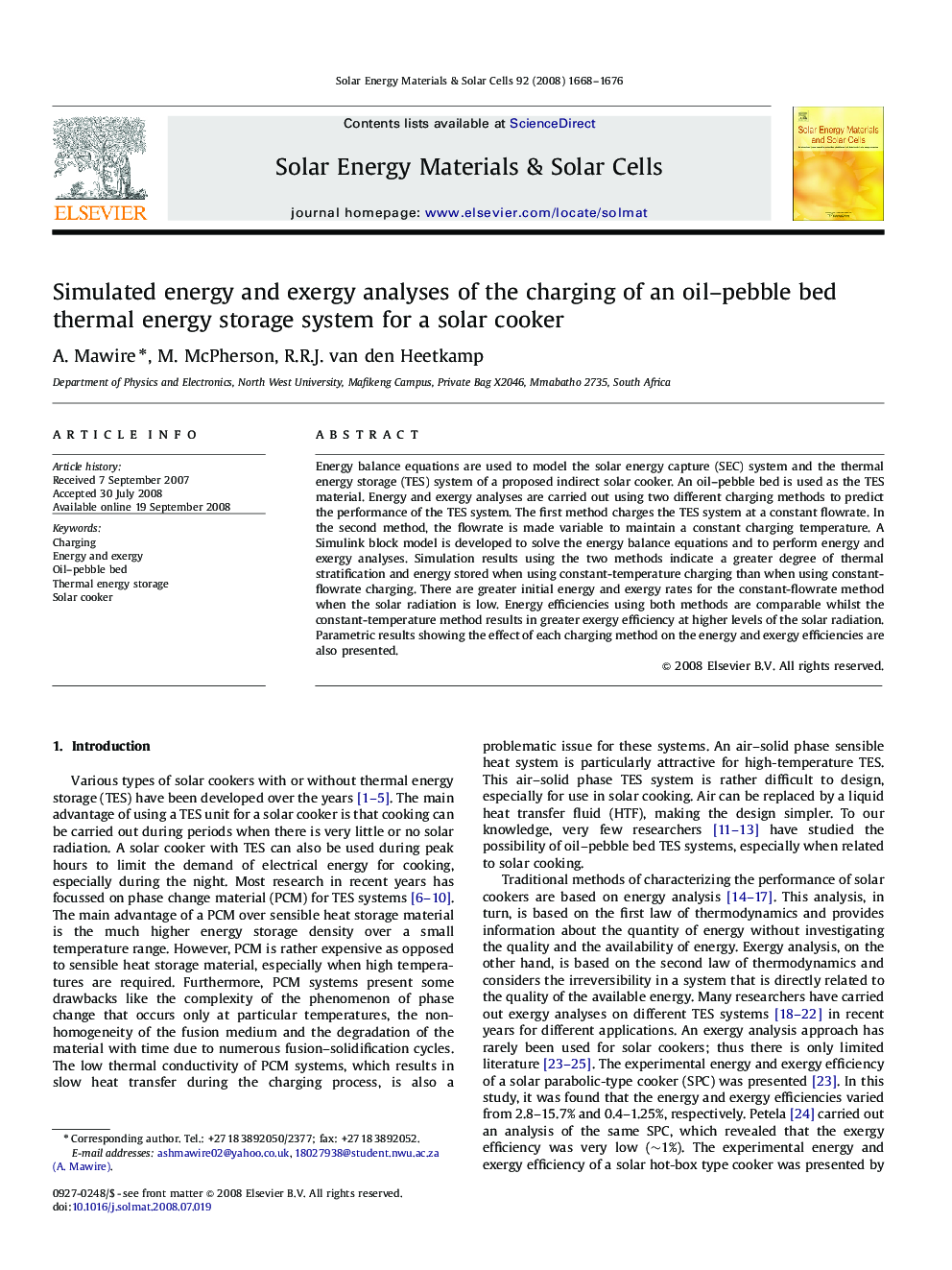| Article ID | Journal | Published Year | Pages | File Type |
|---|---|---|---|---|
| 80226 | Solar Energy Materials and Solar Cells | 2008 | 9 Pages |
Energy balance equations are used to model the solar energy capture (SEC) system and the thermal energy storage (TES) system of a proposed indirect solar cooker. An oil–pebble bed is used as the TES material. Energy and exergy analyses are carried out using two different charging methods to predict the performance of the TES system. The first method charges the TES system at a constant flowrate. In the second method, the flowrate is made variable to maintain a constant charging temperature. A Simulink block model is developed to solve the energy balance equations and to perform energy and exergy analyses. Simulation results using the two methods indicate a greater degree of thermal stratification and energy stored when using constant-temperature charging than when using constant-flowrate charging. There are greater initial energy and exergy rates for the constant-flowrate method when the solar radiation is low. Energy efficiencies using both methods are comparable whilst the constant-temperature method results in greater exergy efficiency at higher levels of the solar radiation. Parametric results showing the effect of each charging method on the energy and exergy efficiencies are also presented.
